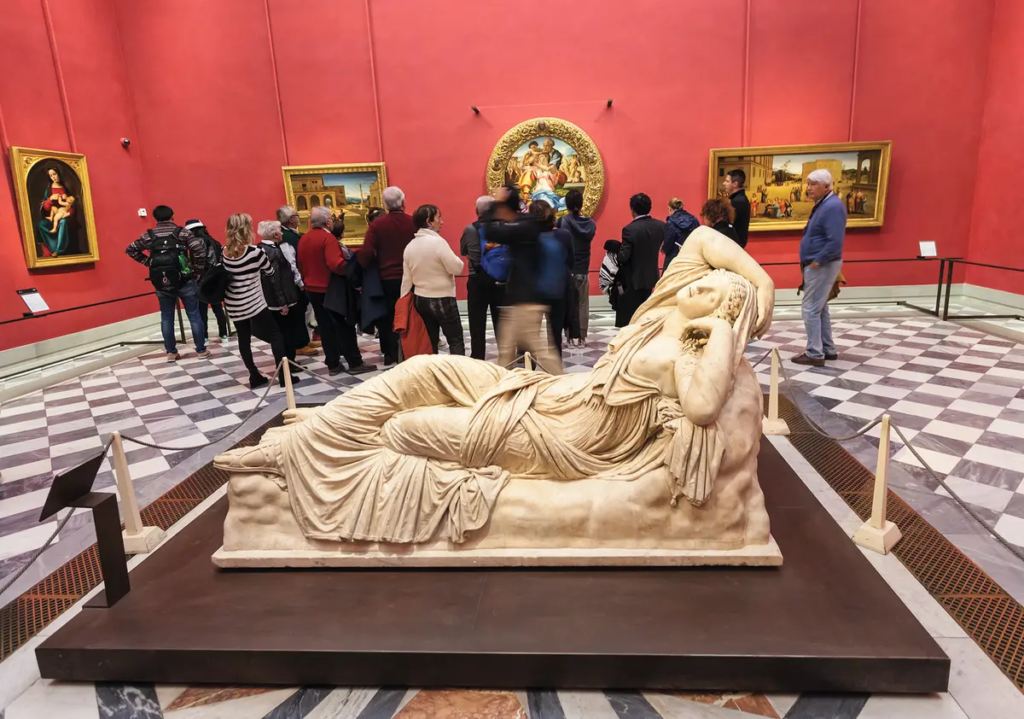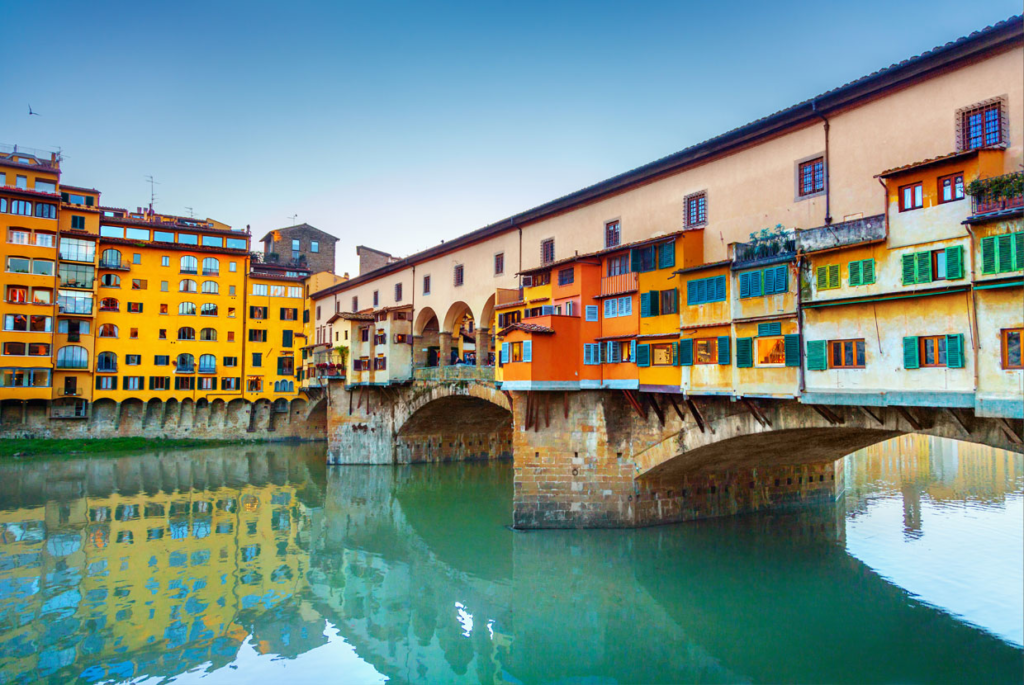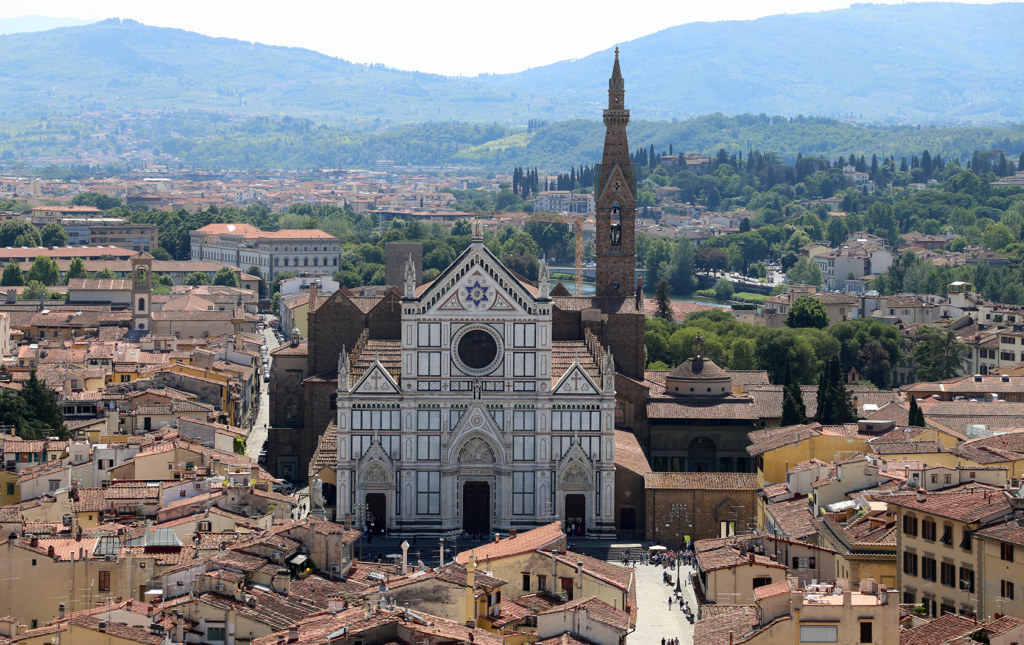Florence, the heart of Tuscany and the birthplace of the Renaissance, is a city where history, art, and culture intertwine to create an unparalleled experience for visitors. Its narrow cobblestone streets, iconic landmarks, and breathtaking art collections make it one of the most sought-after destinations in the world. Whether you’re a history buff, an art enthusiast, or simply someone who loves to immerse themselves in the beauty of the past, Florence has something to offer. In this article, we’ll explore the top 5 must-visit places in Florence, providing detailed insights to ensure you make the most of your visit.
1. The Florence Cathedral (Il Duomo) and Brunelleschi’s Dome

No visit to Florence is complete without experiencing the awe-inspiring Florence Cathedral, known as Il Duomo. This iconic structure, with its striking red-tiled dome, dominates the city’s skyline and serves as a symbol of Florence’s rich history and architectural brilliance. The cathedral, officially known as the Cattedrale di Santa Maria del Fiore, was designed by Arnolfo di Cambio in the late 13th century, but it is Filippo Brunelleschi’s dome, added in the 15th century, that truly steals the show.
As you approach the cathedral, you’ll be struck by its stunning facade, adorned with intricate marble panels in shades of green, pink, and white. The beauty of the exterior is just the beginning. Inside, the cathedral’s vast nave is a testament to Gothic grandeur, but it’s the ascent to the dome that offers an unforgettable experience. Climbing the 463 steps to the top of Brunelleschi’s Dome is a must for anyone visiting Florence. As you ascend, you’ll pass through narrow corridors and steep staircases, with occasional glimpses of the dome’s interior frescoes, which depict The Last Judgment, painted by Giorgio Vasari and Federico Zuccari.
Tips for Visiting:
- Arrive Early: The lines to climb the dome can be long, especially during peak tourist season. Arriving early in the morning will give you a head start and allow you to enjoy the views without the crowds.
- Dress Modestly: As a place of worship, the cathedral requires modest attire. Ensure your shoulders and knees are covered before entering.
- Purchase a Combined Ticket: The Cathedral complex includes the Baptistery, Giotto’s Campanile, and the Opera del Duomo Museum. A combined ticket allows you to explore all these sites over 72 hours.
2. Uffizi Gallery

For art lovers, the Uffizi Gallery is nothing short of a pilgrimage site. Housing one of the most significant collections of Renaissance art in the world, the Uffizi Gallery allows visitors to journey through centuries of artistic evolution, from the Middle Ages to the High Renaissance. The gallery was originally constructed in 1560 by Giorgio Vasari for Cosimo I de’ Medici and has since become a treasure trove of masterpieces.
The Uffizi Gallery is home to works by some of the greatest artists in history, including Botticelli, Leonardo da Vinci, Michelangelo, and Raphael. As you navigate the gallery’s labyrinthine corridors, you’ll encounter iconic paintings such as Botticelli’s “The Birth of Venus” and “Primavera,” both of which exemplify the ideals of Renaissance beauty and humanism. Another must-see is Leonardo da Vinci’s “Annunciation,” which showcases his mastery of perspective and subtle use of light.
Tips for Visiting:
- Book Tickets in Advance: The Uffizi Gallery is one of Florence’s most popular attractions, and lines can be daunting. Booking your tickets online in advance not only saves time but also ensures you don’t miss out.
- Take a Guided Tour: To truly appreciate the art on display, consider joining a guided tour. An expert guide can provide context and insights that bring the paintings to life.
- Plan Your Visit: The gallery is extensive, and it’s easy to get overwhelmed. Prioritize the rooms and artworks you want to see, and allow yourself plenty of time to explore at a leisurely pace.
3. Ponte Vecchio

The Ponte Vecchio, or “Old Bridge,” is more than just a means of crossing the Arno River; it’s a historic landmark that embodies the spirit of Florence. This medieval stone bridge, famous for the shops that line its edges, has been a bustling marketplace for centuries. While the bridge itself dates back to Roman times, the current structure was built in 1345 and is one of the few surviving bridges of its kind.
Walking across the Ponte Vecchio is like stepping back in time. The bridge is lined with a variety of shops, primarily jewelers, goldsmiths, and art dealers, continuing a tradition that dates back to the Renaissance when the Medici family decreed that only jewelers and goldsmiths were allowed to operate on the bridge. The central part of the bridge offers stunning views of the Arno River and the city beyond, making it a popular spot for photos.
Tips for Visiting:
- Visit at Sunrise or Sunset: The Ponte Vecchio can get quite crowded during the day. Visiting early in the morning or late in the evening allows you to experience the bridge in a more peaceful setting. The soft light during these times also enhances the beauty of the views.
- Explore the Vasari Corridor: While currently closed to the public, the Vasari Corridor runs above the shops on the Ponte Vecchio and was once a private passageway for the Medici family. If it reopens during your visit, it’s worth exploring for its unique perspective on the city.
- Avoid Buying: While the shops on the Ponte Vecchio are charming, they tend to be quite expensive. If you’re interested in purchasing jewelry or art, consider shopping elsewhere in Florence where prices might be more reasonable.
4. Palazzo Pitti and Boboli Gardens

Just a short walk from the Ponte Vecchio, across the Arno River, lies the Palazzo Pitti, a vast Renaissance palace that was once the residence of the powerful Medici family. Today, the palace is home to several museums that showcase a wide range of art and historical artifacts, but it’s the Boboli Gardens behind the palace that often steal the show.
The Palazzo Pitti itself is a marvel of Renaissance architecture, with its imposing stone facade and grand courtyards. Inside, you’ll find the Palatine Gallery, which houses an extensive collection of paintings from the Renaissance and Baroque periods, including works by Raphael, Titian, and Rubens. The palace also includes the Royal Apartments, the Silver Museum, and the Costume Gallery, each offering a unique glimpse into the opulent lifestyle of Florence’s elite.
Beyond the palace, the Boboli Gardens provide a tranquil escape from the city’s hustle and bustle. Designed in the 16th century, these sprawling gardens are a masterpiece of Italian landscape architecture, featuring manicured lawns, ornate fountains, and classical sculptures. As you wander through the gardens, you’ll discover hidden grottos, towering cypress trees, and breathtaking views of Florence.
Tips for Visiting:
- Allocate Enough Time: The Palazzo Pitti and Boboli Gardens are extensive, and you could easily spend an entire day exploring them. Plan to visit on a day when you have ample time to wander at your own pace.
- Wear Comfortable Shoes: The gardens are expansive, with many hills and gravel paths. Comfortable footwear is essential for exploring both the palace and the gardens.
- Visit the Bardini Gardens: Adjacent to the Boboli Gardens, the Bardini Gardens offer equally stunning views and are often less crowded. Consider adding them to your itinerary for a more serene experience.
5. Basilica of Santa Croce

The Basilica of Santa Croce is not only a stunning example of Gothic architecture but also a resting place for some of Italy’s most illustrious figures. Known as the “Temple of the Italian Glories,” Santa Croce is the final resting place of greats like Michelangelo, Galileo Galilei, Machiavelli, and Rossini. The basilica, with its striking white and green marble facade, is a spiritual and cultural hub that reflects the rich history of Florence.
Upon entering the basilica, you’ll be greeted by a vast nave lined with beautifully frescoed chapels, each dedicated to various noble families of Florence. The highlight of the basilica is the tombs of famous Florentines, which are adorned with elaborate sculptures and epitaphs. The tomb of Michelangelo, in particular, is a masterpiece, designed by Vasari, featuring allegorical figures representing Painting, Sculpture, and Architecture mourning the loss of their master.
The basilica also houses works by renowned artists such as Donatello and Giotto. Giotto’s frescoes in the Peruzzi and Bardi chapels are particularly noteworthy, showcasing the early development of Renaissance art. Adjacent to the basilica is the Pazzi Chapel, an exquisite example of Renaissance architecture designed by Brunelleschi, which is worth a visit.
Tips for Visiting:
- Respect the Atmosphere: Santa Croce is an active place of worship, so it’s important to maintain a respectful demeanor during your visit. Silence and modest attire are appreciated.
- Explore the Cloisters: The basilica’s cloisters offer a peaceful retreat and are often less crowded than the main church. The cloisters are home to the Museo dell’Opera di Santa Croce, which houses an impressive collection of religious art and artifacts.
- Don’t Miss the Leather School: Behind the basilica is the Scuola del Cuoio, a historic leather school where you can watch artisans at work and purchase high-quality leather goods.
Read this article Best 7 Cities You Must Visit in Italy








